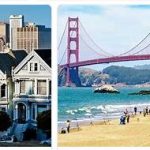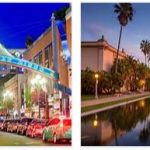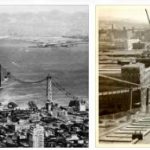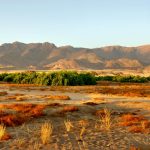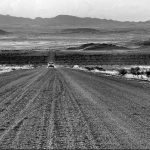(Republic of San Marino). Southern European state, enclave of Italy (61.16 km²). Capital: San Marino. Administrative division: municipality (9). Population: 31,006 (2007 estimate). Language: Italian. Religion: Catholics 88.9%, others 11.1%. Monetary unit: euro (100 cents). Borders: Emilia-Romagna (N), Marche (S). Member of: Council of Europe, UN and OSCE.
Small enclave of the Italian state, the ancient Republic of San Marino, the only survivor of the numerous independent city-states existing in Italy before its unification in the nineteenth century, located in the imposing rock face of Mount Titano its dominant morphological note. The rapid population of the territory and its establishment as an independent state are the typical expression of that process typical of the municipal age, when a geographically well-identified (and easily defensible) region often gave rise to an autonomous political entity. San Marino has managed to preserve its independence over the centuries by starting diplomatic and consular relations with many states, in particular with Italy to which it is linked by a friendship treaty and a customs and monetary union. In 2008 the historic center of the town and Mount Titano were inscribed in the UNESCO World Heritage Site.
THE STATE
The political institutions of the Republic of San Marino date back to medieval traditions; we have memory of San Marino statutes since the century. XIII. The Republic is divided into nine municipalities or castles: Acquaviva, Borgo Maggiore, Chiesanuova, Domagnano, Faetano, Fiorentino, Montegiardino, San Marino, Serravalle Dogana. Legislative power is exercised by the Great and General Council, made up of 60 members elected every 5 years by universal suffrage (the vote was extended to women in 1960). The executive power rests with the Council of State, divided into ten departments, each headed by a secretary of state, and two captains regent, elected every 6 months from among the members of the Great Council, who are assigned eminently representative functions, similar to those of a head of state. As a neutral state, the Republic of San Marino does not provide for compulsory military service but has voluntary military corps.
HISTORY
Tradition has it that the oldest republic in Europe arose around the middle of the century. IV d. C. by a stonebreaker of Dalmatian origin, Marino, who fled with some companions to the persecutions ordered by the Emperor Diocletian: the handful of refugees led by him would be installed on Mount Titano thanks to the support of the Rimini bishop Gaudenzio. Having become a vico, then a parish church, then a castle with the name of Terra di San Marino, the community was constituted, around the year 1000, as a free municipality. Fortified against the Saracens and the Normans with the construction of three fortresses, in 1263 the municipality acquired its own statutes, entrusting the government to the consuls of the Assembly of heads of families (Arengo). With the help of the Dukes of Urbino, the Republic of Venice and Florence, the San Marino citizens resisted the attacks of Sigismondo Malatesta (1440-50), enlarged their territory with the annexation of the castles of Fiorentino, Montegiardino, Faetano and Serravalle, granted to them by Pope Pius II (1463), and they chose to be governed by a Grand Council made up of twenty nobles, twenty bourgeois and twenty peasants; in the course of the following centuries, however, the Grand Council was transformed into an oligarchy of forty-five nobles. Apart from the brief dominion of Cesare Borgia, the Republic of San Marino maintained its independence which was also recognized by Napoleon in 1797, by the Congress of Vienna in 1815 and by Pius VII in 1817. During the Risorgimento many Italian patriots found refuge there including Garibaldi who in 1849 dissolved the his Roman legion. Subjected to the fascist regime after 1923, the Republic was damaged by the allied bombings of 1943-44. After 1945 a left-wing government, called the Popular Front, came to power, which fell in 1957 in a climate of grave tension. Since then the San Marino Christian Democratic Party (PDCS) first governed alone and then with the San Marino Socialist Party (PSS), until 1977, when the government entered into crisis.
According to globalsciencellc, the 1978 elections were won by a left-wing coalition, formed by the Communist Party of San Marino (PCS), the PSS and the Unitarian Socialist Party (PSU), which was confirmed in 1983. Since 1986 the small country has been ruled by a coalition of PDCS and PCS. The latter party in 1990 changed its name to the Progressive Democratic Party (PDP), closely linked to the Italian PDS. In 1992 the PDCS broke the alliance with the PDP, creating a coalition government with the PSS. The new coalition was then confirmed following the elections of 1993, 1998 and 2001. In June 2006 the legislative elections were held, which were won by the PDCS with 32.9% of the votes. In November 2008 the coalition led by the PDCS won the early elections, defeating the parties of the left.



